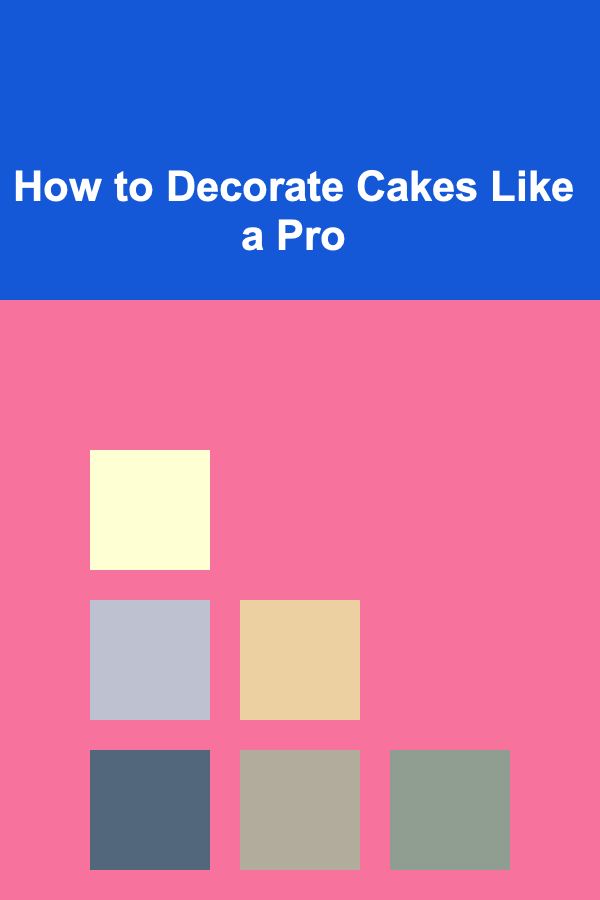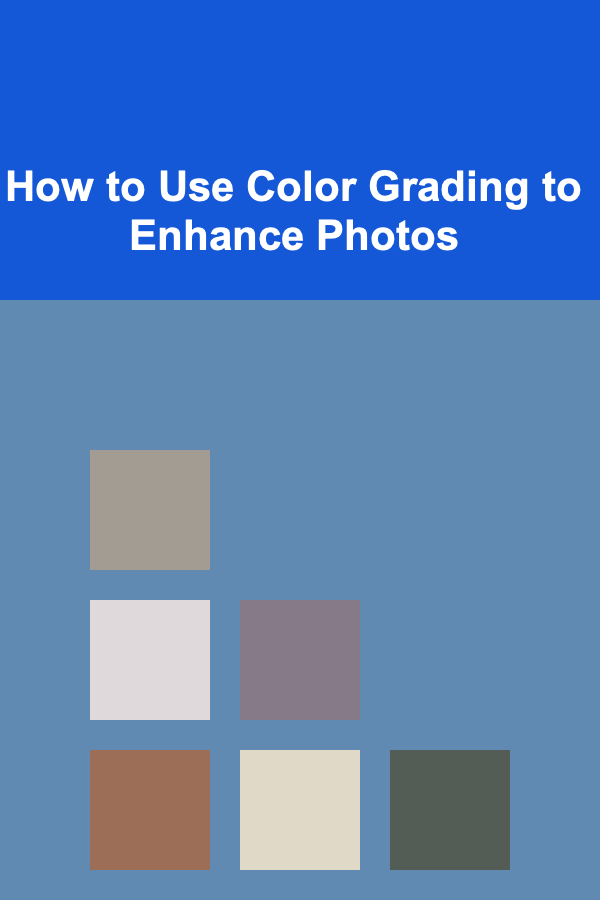
How to Design Packaging for Subscription Boxes
ebook include PDF & Audio bundle (Micro Guide)
$12.99$9.99
Limited Time Offer! Order within the next:
Not available at this time

Designing packaging for subscription boxes is an intricate process that involves both creativity and practicality. Subscription boxes are increasingly popular, offering customers the excitement of receiving curated items delivered to their doorsteps regularly. The packaging design plays a crucial role in delivering a memorable unboxing experience, which in turn can enhance customer satisfaction, encourage brand loyalty, and even increase the perceived value of the contents. In this article, we'll explore the essential aspects of packaging design for subscription boxes, from understanding your brand and target market to the materials and aesthetics that will best serve your customers' needs.
Understanding the Importance of Packaging in Subscription Boxes
Before diving into the specifics of packaging design, it's important to understand why packaging is such a critical element for subscription boxes. Unlike traditional e-commerce, where customers receive individual products in standard packaging, subscription boxes offer a more immersive experience. The unboxing process itself becomes part of the excitement, creating a moment of anticipation and delight.
Good packaging for subscription boxes should serve multiple purposes:
- Brand Identity: The packaging should reflect the brand's identity and values, helping customers connect with the company on a deeper level.
- Customer Experience: A well-designed package elevates the unboxing experience, making it feel more special and creating a sense of anticipation.
- Protection and Functionality: Packaging needs to protect the products during transit and storage, ensuring they arrive in perfect condition.
- Marketing: Packaging can be a powerful marketing tool. It can include promotional information, calls to action, or invitations to share experiences on social media, enhancing the visibility of the brand.
A successful subscription box packaging design balances all these elements while still aligning with the brand's goals and customer expectations.
Key Factors to Consider When Designing Packaging for Subscription Boxes
1. Know Your Target Audience
The first step in designing packaging for subscription boxes is to understand your target audience. Who are the customers that will be receiving these boxes? Their preferences, lifestyles, and expectations will guide many of your design decisions.
- Age and Demographics: The age, gender, and income level of your target audience can influence the materials, colors, and messaging you choose. For example, a subscription box aimed at teenagers might feature bold, vibrant colors and playful designs, while one for high-end beauty products might prioritize minimalist, sophisticated packaging.
- Interests and Values: Consider what your customers value. For instance, eco-conscious consumers may prefer sustainable, recyclable packaging, while luxury customers might expect premium materials and attention to detail. Packaging should align with their values to build trust and appeal.
- Psychographics: Delve deeper into your audience's psychological factors. Are they looking for convenience? Are they interested in a sense of surprise and discovery? Understanding these aspects can guide your approach to both the aesthetics and functionality of the packaging.
2. Branding and Identity
The packaging for your subscription box must clearly communicate your brand's identity. It should reflect your brand's personality and values, giving customers a visual representation of what your brand stands for.
- Logo and Color Palette: Ensure that your logo is prominently displayed, and use your brand's color palette to create a cohesive look across your packaging. Consistency is key to building brand recognition.
- Typography: Choose fonts that align with your brand's tone. For example, a playful font might be perfect for a kids' subscription box, while a clean, modern font may suit a health or wellness brand.
- Message and Storytelling: Packaging design can be an opportunity to tell your brand's story. Consider including a short message or slogan on the inside or outside of the packaging that reinforces your brand values and connects emotionally with your customers.
3. Unboxing Experience
The unboxing experience is a critical aspect of subscription box packaging design. This experience should evoke excitement and make customers feel as though they are receiving something exclusive. The moment a customer opens the box, they should feel a sense of joy, anticipation, and connection to the brand.
- Presentation: Thoughtfully designed packaging, such as tissue paper, crinkle cut filler, and custom inserts, can enhance the presentation of the contents. Think of packaging as the wrapping paper to a gift---it's the first layer of the experience.
- Personalization: Adding personal touches, like a handwritten note or customized inserts, can make the unboxing experience feel even more special. Consider including the customer's name or a message that makes them feel unique.
- Surprise Element: Including a surprise, such as a small extra gift, limited-edition item, or exclusive offer, can make the unboxing experience more memorable and exciting. This surprise can enhance customer satisfaction and foster brand loyalty.
4. Protection and Functionality
Beyond aesthetics, the packaging must be functional. The primary purpose of the packaging is to protect the contents during transit and delivery, ensuring they arrive in perfect condition. Depending on the products inside the box, you may need to incorporate various protective elements:
- Cushioning Materials: Use bubble wrap, foam inserts, or packing peanuts to protect fragile items. These materials help prevent damage during shipping and give customers confidence that their items will arrive safely.
- Size and Fit: The box should be appropriately sized for its contents. A box that is too large might allow items to shift around, potentially causing damage, while a box that is too small can lead to crushed or broken items.
- Durability: Choose packaging materials that can withstand the rigors of the shipping process. You'll want packaging that is both durable and resistant to moisture, dust, and environmental factors that could affect the contents.
5. Sustainability and Environmental Impact
In today's market, sustainability is a key consideration in packaging design. More and more consumers are becoming eco-conscious and expect brands to align with their values regarding the environment. As such, considering eco-friendly packaging options is a great way to appeal to customers while also helping to reduce your environmental footprint.
- Recyclable Materials: Opt for materials that are easy to recycle, such as cardboard, paper, and biodegradable fillers.
- Minimalism: Reduce the use of excess packaging. Consider a minimalist design approach that focuses on necessary elements while eliminating waste.
- Sustainable Sourcing: Choose suppliers that prioritize sustainable production practices. If possible, use locally sourced materials to reduce carbon footprints associated with transportation.
Incorporating sustainability into your packaging design can help reinforce your brand's commitment to environmental responsibility, while also appealing to eco-conscious customers.
6. Cost and Budget Considerations
While it's tempting to go all-out on creative, high-end packaging, it's important to keep an eye on your budget. Subscription box packaging can become costly if you opt for luxurious materials or intricate designs, which can negatively impact your bottom line.
- Bulk Ordering: Consider ordering packaging materials in bulk to lower costs per unit. Many suppliers offer discounts for large quantities.
- Cost-Effective Design: You don't have to sacrifice design for cost. Simple, elegant designs with well-chosen materials can be both cost-effective and aesthetically pleasing.
- Balance Between Presentation and Protection: Ensure that you strike the right balance between creating an impressive presentation and adequately protecting the contents. Over-packing may add unnecessary costs, while under-packing can lead to damages and customer dissatisfaction.
7. Innovative and Interactive Elements
Innovative packaging elements can set your subscription box apart from others in the market. Unique packaging ideas engage customers and encourage them to share their unboxing experiences on social media, providing organic marketing for your brand.
- Interactive Features: Include features such as QR codes or augmented reality (AR) experiences that customers can engage with to learn more about the products inside the box.
- Custom Inserts and Cards: Include interactive elements like discount codes, challenges, or quizzes that encourage customer participation and engagement with your brand.
- Themed Packaging: Consider designing your subscription box packaging around a particular theme, season, or special occasion to make the unboxing experience feel relevant and timely. For example, holiday-themed boxes can feature custom-printed designs, colors, and textures related to the season.
Conclusion
Designing packaging for subscription boxes is not just about aesthetics; it's about crafting an experience that resonates with customers, enhances their journey with your brand, and reflects the values and identity of your company. By considering your target audience, branding, unboxing experience, functionality, sustainability, cost, and innovative features, you can create packaging that not only protects your products but also elevates your customers' experience. The right packaging can turn a simple unboxing into an unforgettable moment, strengthening customer loyalty and setting your brand apart from the competition.
Ultimately, the goal is to create packaging that speaks to your customers, resonates with their values, and provides a lasting impression every time they open their subscription box.

How to Build a Checklist for Identifying Potential Business Partners
Read More
How to Set Realistic Financial Goals for the Next 5 Years
Read More
How to Decorate Cakes Like a Pro
Read More
How to Use Color Grading to Enhance Photos
Read More
How to Get a Grant for College
Read More
10 Tips for Writing Engaging Historical Fiction
Read MoreOther Products

How to Build a Checklist for Identifying Potential Business Partners
Read More
How to Set Realistic Financial Goals for the Next 5 Years
Read More
How to Decorate Cakes Like a Pro
Read More
How to Use Color Grading to Enhance Photos
Read More
How to Get a Grant for College
Read More